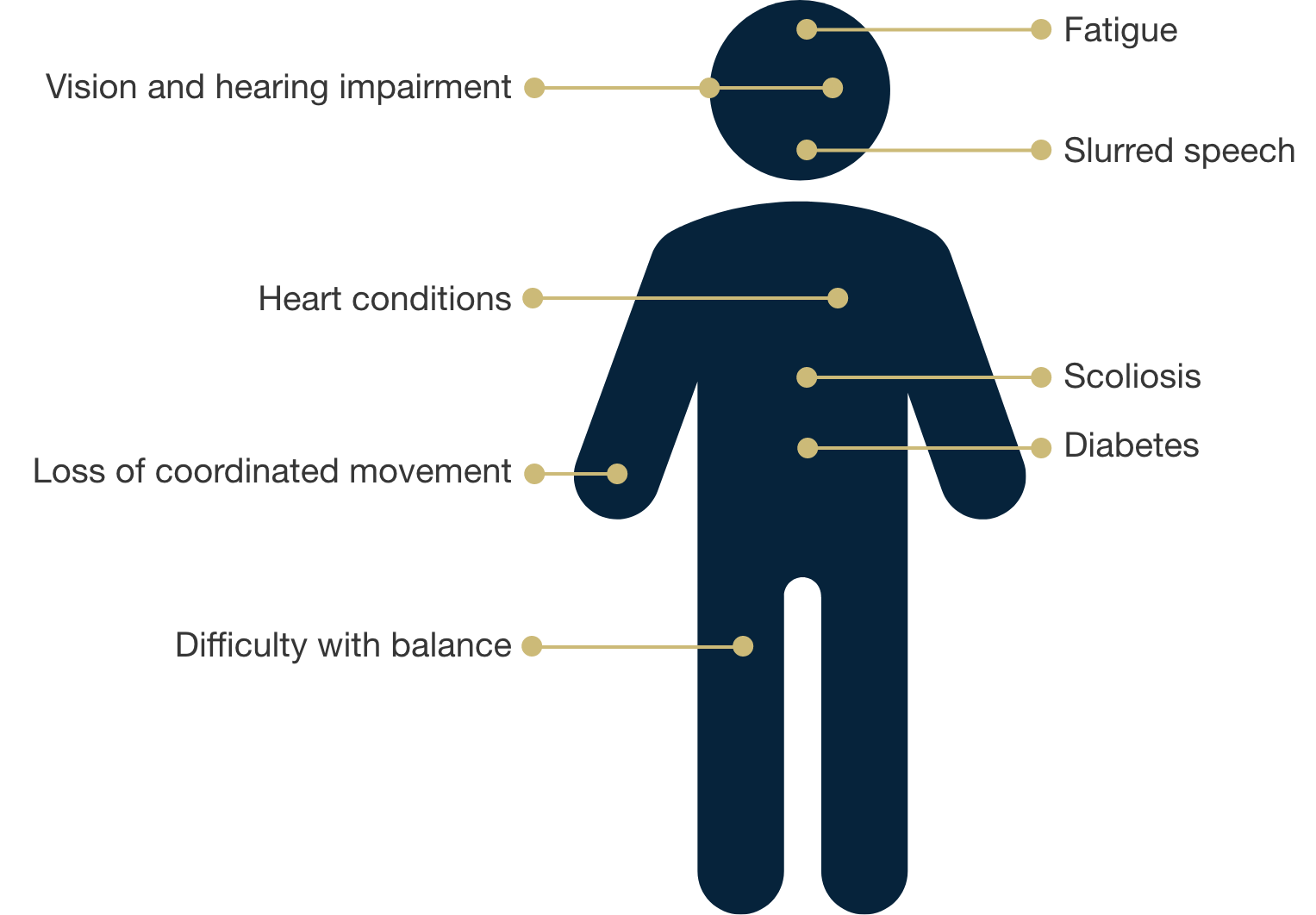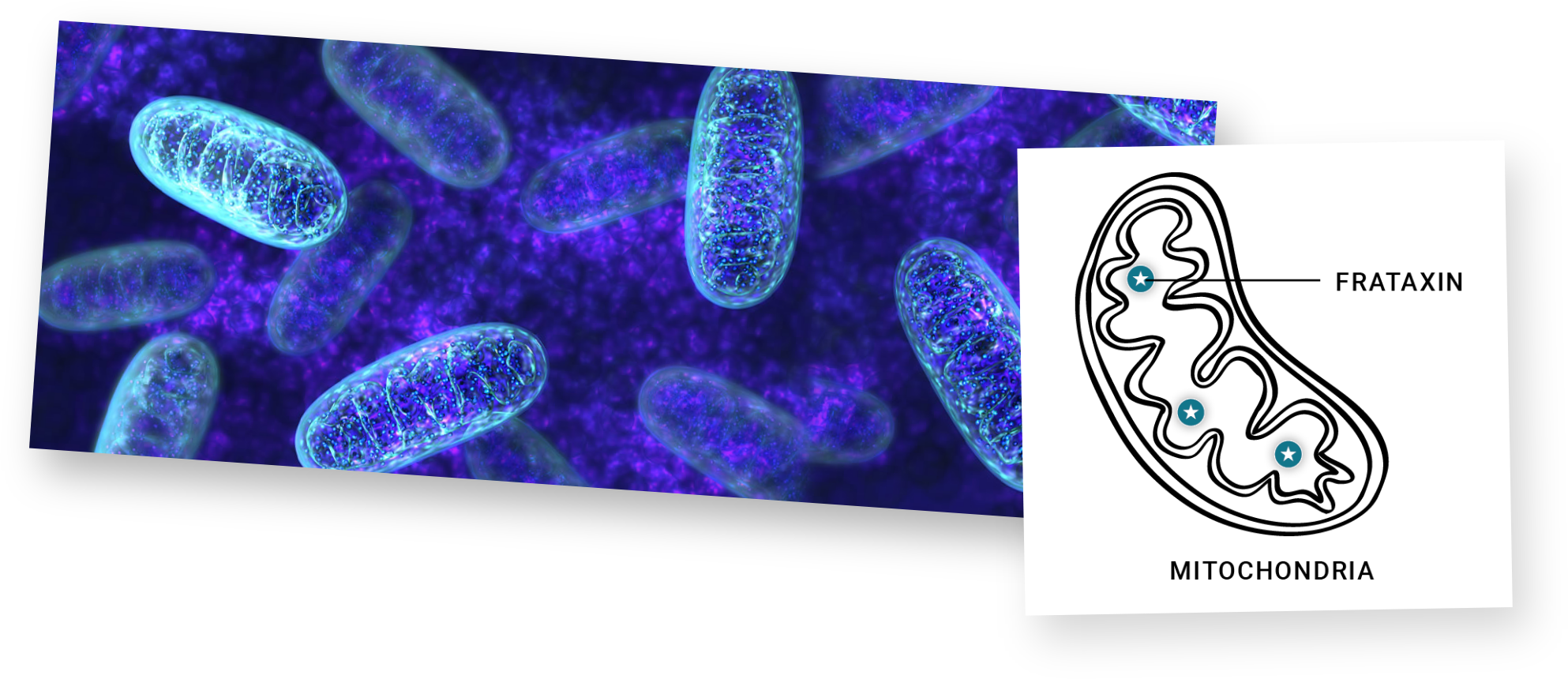
Choose the statement that best describes you:
In the last few years, there have been advances in the management of FA. However, it’s time to turn the page and focus on the root cause—frataxin deficiency—and the potential of increasing frataxin levels as a therapeutic target.

Signs and symptoms of FA include3

Talk to your doctor if you are experiencing these symptoms.
FA is an inherited disorder where the frataxin gene is mutated, affecting the production of an important protein called frataxin.4
FA affects 1 in every 40,000 people globally and approximately 5000 in the US.5-7
Symptoms of FA typically appear between the ages of 5 and 20 and sometimes can present in individuals as late as in their 60s.2
Your doctor can confirm an FA diagnosis with genetic testing.8
There is a wide array of doctors that are involved in the management of FA, including primary care providers; neurologists; cardiologists; physical, occupational, and speech therapists; endocrinologists; orthopedic surgeons; and mental health professionals.9
Your doctor may conduct a series of assessments to check your balance, sensations, reflexes, and more.10

Frataxin is a key protein that supports the production of energy for multiple systems in the body, including the nervous system and heart.10 With decreased frataxin, the cells in the body are less able to make the energy the body needs to function.5
People with FA have significantly reduced levels of frataxin compared to healthy individuals. Lower levels of frataxin typically correlate with earlier disease onset and more severe symptoms.2
Research has revealed the potential of increasing frataxin levels through therapeutic approaches such as frataxin replacement therapy, gene therapy, and small molecule medicine—welcoming a new chapter in FA.

The content on this site has been created solely for US residents. It is intended for informational purposes only and should not be used to replace a discussion with a healthcare professional. All decisions regarding patient care must be handled by a healthcare professional and made based on the unique needs of each patient.
References:

Choose the statement that best describes you: